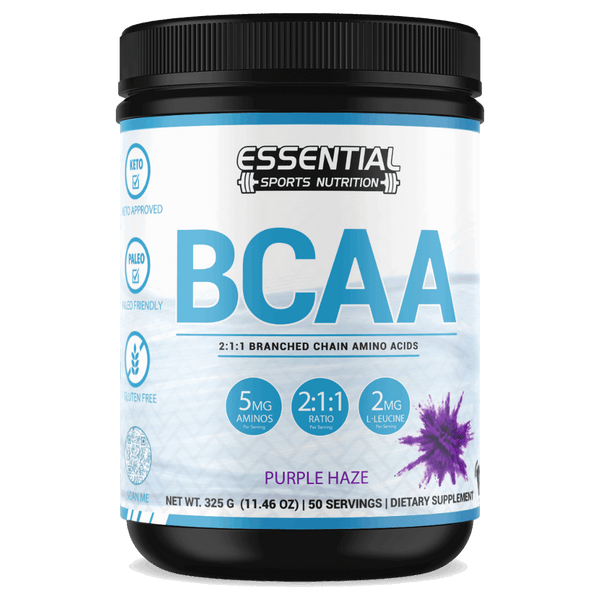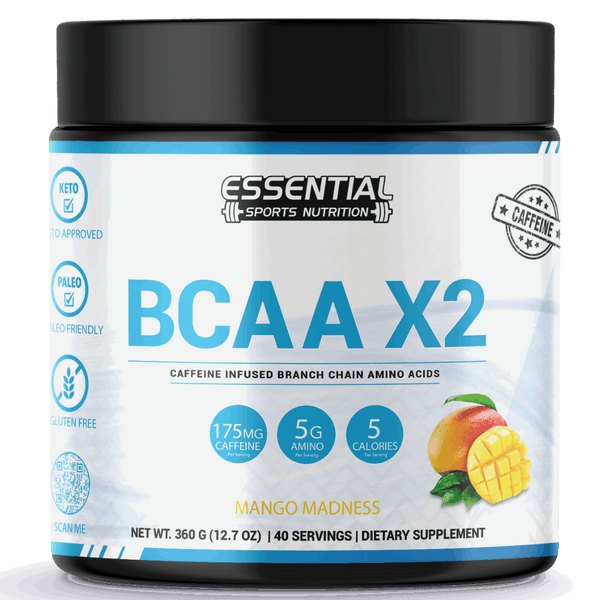To improve your running, integrate rucking into your training. It enhances overall fitness, builds functional strength, and engages muscles often overlooked by runners. Start with a light load of 10-25 pounds and gradually increase. Use a quality backpack and focus on proper form and weight progression. Rucking boosts cardiovascular health provides a holistic workout and sustains calorie burn with lower joint impact. It's excellent cross-training and promotes upright posture and core engagement. Utilize varied terrains to build endurance and balanced muscle development. If you explore further, you'll discover how this can transform your running performance to new heights.

Key Takeaways
Rucking builds functional strength and engages muscles often neglected in the running.
It provides a holistic workout combining cardio and muscle engagement, enhancing overall fitness.
Rucking reduces muscle soreness and offers active recovery, promoting sustained training.
Incorporating varied terrains in rucking improves endurance and stability essential for running.
Gradual weight progression in rucking fortifies core strength and posture, which is beneficial for running performance.
The Benefits of Rucking
Incorporating rucking into your running regimen can dramatically enhance your overall fitness by strengthening often-overlooked muscles and boosting cardiovascular health. Rucking is a great way to improve your fitness because it engages the entire body, targeting muscles that running alone may not address. Carrying a weighted backpack, or ruck, builds functional strength as you walk or hike, making it an excellent form of cross-training.
The strength benefits of rucking are significant, particularly for your core, back, and leg muscles. These areas often get neglected in a typical running routine, leading to imbalances and potential injuries. Incorporating rucking can enhance your muscular endurance and stability, translating to better running performance and reduced soreness.
Rucking provides a perfect blend of cardio and strength training. The added weight increases your heart rate, boosting cardiovascular fitness while simultaneously building muscle. This dual benefit makes rucking an efficient workout for those looking to maximize their training time. Plus, it burns calories effectively, supporting weight management goals.
How to Start Rucking

To start rucking effectively, begin with a light load of 10-25 pounds and gradually increase the weight as your strength and endurance improve. This incremental approach guarantees you build a solid foundation without overburdening your body. Use a quality backpack or plate carrier designed for rucking to ensure comfort and safety. As you progress, experiment with different forms of carrying like Suitcase, Waiter's, and Farmer's Carries to engage various muscle groups, enhancing overall muscular development.
Incorporate rucking into your running routine to add variety and improve your endurance. Start by adding short rucking sessions post-running or on active recovery days. This will help you maintain a balanced training regimen and prevent overuse injuries from repetitive running. Exploring varied terrains and inclines will further challenge your strength and adaptability, making your running more efficient and resilient.
Rucking Techniques
Mastering rucking techniques requires a focus on proper form and gradually increasing weight to optimize strength gains and prevent injuries. Start by maintaining an upright posture, engaging your core, and distributing weight evenly in your backpack. This proper form minimizes strain and targets different muscle groups effectively.
To enhance strength and endurance, incorporate varied terrains into your rucking routine. Walking on hills, trails, and uneven surfaces not only challenges your stability but also mimics the diverse conditions of running, thereby improving your running performance.
Rucking is a lower-impact exercise compared to running, making it an excellent way to build strength without excessive stress on your joints. Begin with a manageable weight and follow a gradual progression, adding weight incrementally as your body adapts. This approach ensures steady improvement and reduces the risk of injury.
Experiment with different rucking techniques like frontward carries, overhead carries, and other weighted carries to engage multiple muscle groups. By diversifying your methods, you'll develop a well-rounded strength base that supports your running goals. Remember, consistency and variation are key to mastering rucking techniques and reaping the full benefits of this training.
Rucking Vs. Running

When comparing rucking and running, you'll find that rucking offers a unique blend of cardiovascular and strength training benefits, whereas running primarily enhances cardiovascular fitness. Rucking engages more muscle groups due to the added weight, promoting overall muscular endurance. By integrating rucking into your routine, you can achieve a balanced approach that maximizes both cardio and muscle engagement.
Cardiovascular Benefits Comparison
Comparing the cardiovascular benefits of rucking and running reveals that while both activities burn a substantial amount of calories, rucking offers the added advantage of incorporating strength training, making it a more holistic workout. Rucking enhances your cardiovascular health and provides a full-body workout by engaging various muscle groups.
Calorie Burn: Both rucking and running burn a considerable number of calories, but rucking can be more sustainable over longer periods due to its lower impact on your joints.
Strength Training: Rucking incorporates strength training elements by adding weight, thereby improving your muscular endurance and overall fitness level.
Lower Impact: The lower impact nature of rucking results in fewer injuries compared to running, making it a safer alternative, especially for those prone to joint pain.
Injury Rates: Research indicates that runners have a higher injury rate compared to ruckers, making rucking a more viable long-term cardiovascular exercise.
Incorporating rucking into your fitness regimen can significantly enhance your cardiovascular health while minimizing the risk of injuries. It's a highly effective way to boost your fitness level, combining the cardio benefits of running with the strength training advantages of weight-bearing exercise.
Muscle Engagement Differences
To further enhance your fitness regimen, understanding the muscle engagement differences between rucking and running can optimize your workouts and target specific muscle groups more effectively. Rucking engages your upper body muscles, including the shoulders and back, which are often vital in traditional running. This full-body muscle engagement promotes balanced muscle development and enhances overall strength.
When you ruck, the added weight intensifies the workload on your core muscles. This continuous resistance helps build core strength, greatly improving your stability and posture. Unlike running, where the focus is mainly on lower body muscles, rucking ensures that your upper body and core are actively engaged throughout the activity.
The engagement of a broader range of muscles means that rucking can boost your endurance in ways running alone might not. The constant muscle activation required to manage the weight during rucking challenges your body differently, fostering increased overall strength and muscular endurance. By incorporating rucking into your routine, you diversify your workout and strengthen the muscle groups essential for maintaining stability and improving posture, ultimately enhancing your running performance.
Rucking Gear Essentials

To maximize your rucking sessions, begin by selecting the right backpack weight that fits your training goals and physical capacity. Don't forget the importance of high-quality footwear and moisture-wicking socks to prevent blisters and improve comfort. Lastly, ensure you're adequately hydrated and fueled by the right nutrition and hydration supplies.
Backpack Weight Selection
Selecting the right backpack weight, ideally 15-25% of your body weight, is essential for maximizing the benefits of rucking while minimizing the risk of injury. This balance is important for enhancing your endurance and efficiency, ultimately improving your running performance. For example, if you weigh 200 pounds, aim to carry between 30-50 pounds.
Proper backpack weight selection is essential for a few reasons:
Enhances Lower Body Strength: Carrying the correct weight engages and strengthens your lower body muscles, which is key to better running.
Improves Running Efficiency: Balancing weight effectively distributes the load, promoting a more efficient running form and reducing fatigue.
Boosts Endurance: The added resistance from the weight helps build stamina, allowing you to run longer and faster over time.
Ensures Safety: Keeping within the recommended weight range helps prevent injuries, ensuring that your rucking sessions contribute positively to your fitness goals.
Footwear and Socks
With the right backpack weight established, it's time to focus on selecting the best footwear and socks to guarantee your rucking experience is both effective and comfortable. The ideal running shoes for rucking should offer robust support, stability, and cushioning. Look for shoes designed to handle the dual demands of running and rucking, ensuring they are both versatile and durable for various activities.
When considering footwear, prioritize those with superior arch support and enhanced cushioning to absorb the impact of carrying additional weight. Importance is vital to prevent ankle injuries and maintain proper form throughout your rucking sessions.
Equally important are your socks. Quality socks can significantly enhance comfort by preventing blisters and providing extra cushioning. Opt for socks with moisture-wicking properties to keep your feet dry and reduce the risk of friction. Reinforced heels and toes will help withstand the added strain from the weight in your backpack, ensuring longevity and durability.
Investing in high-quality running shoes and socks is non-negotiable. This investment will prevent discomfort and mitigate potential foot injuries, keeping you on track with your rucking and running goals.
Hydration and Nutrition
Why is it essential to prioritize hydration and nutrition during your rucking sessions? Proper hydration and nutrition are critical to maintaining peak performance and ensuring muscle recovery. During rucking, your body loses fluids and electrolytes through sweat, and if these aren't replenished, your performance and recovery can suffer.
Hydration: Equip your backpack with a durable, easy-to-access hydration system. Consistently sipping water prevents dehydration, helping you maintain your energy levels and focus during long rucks.
Energy-Boosting Snacks: Pack energy-boosting snacks like trail mix, energy bars, or gels. These snacks provide a quick source of carbohydrates to keep your glycogen stores replenished, sustaining your stamina over extended periods.
Electrolyte Tablets: Include electrolyte tablets or powders in your gear. These help replenish essential salts and minerals lost through sweat, preventing cramping and fatigue.
Moisture-Wicking Clothing: Opt for lightweight, moisture-wicking clothing to stay dry and comfortable. This helps regulate your body temperature and reduces the risk of chafing and irritation.
Post-ruck, it's crucial to focus on proper nutrition to aid muscle recovery and refuel glycogen stores. Consuming a balanced meal with proteins and carbs will help repair muscles and prepare your body for the next rucking session.
Cross-Training Benefits

Rucking is an excellent cross-training method that reduces muscle soreness and fortifies often neglected muscle groups. Incorporating rucking into your routine can improve your running performance through enhanced strength and cardio without the high impact typically associated with running. This lower-impact activity offers active recovery, allowing your muscles to heal while still getting a solid workout. Rucking engages your whole body, making it an effective way to build functional strength and endurance.
One key benefit of rucking is its ability to promote Zone 2 training, which is important for endurance athletes. Zone 2 training focuses on maintaining a moderate heart rate, enhancing aerobic capacity, and allowing you to run longer distances more efficiently. Additionally, rucking complements running by offering a change in training stimulus, keeping your workouts varied and interesting.
Conclusion

So, there you have it—rucking is your new secret weapon for running like a gazelle on caffeine. You'll be the envy of every marathoner, with your superior endurance and muscle strength. Just don't forget your fancy rucksack; it's your ticket to the podium. Remember, you're not just carrying weight—you're carrying potential. Now, lace up those boots and get moving. Your future self, who's breezing past the competition, will thank you.
Rucking to Make You a Better Runner FAQs
Q: How can rucking help improve my running?
A: Rucking is a low-impact exercise that can help improve your cardiovascular endurance, strengthen your muscles, including your glutes, and burn extra calories. All of these benefits contribute to making you a better runner.
Q: How often should I include rucking in my training routine?
A: Depending on your fitness level, you can start by rucking once or twice weekly and gradually increasing the frequency. It's recommended to have rest days in between rucking sessions to allow your muscles to recover.
Q: Can rucking and running workouts be combined?
A: You can combine rucking with running to vary your training routine and enhance your overall fitness level. It's a great way to add extra weight and challenge yourself during your runs.
Q: What are some recommended rucking workouts for runners?
A: You can try ruck shuffles, hiking with a weighted backpack, or simply walking briskly with a rucking backpack. These exercises can help improve strength, endurance, and mimic the demands of running.
Q: How does rucking support running performance?
A: Rucking can help you build a stronger foundation for running by working various muscle groups, improving your cardiovascular fitness, and enhancing your overall endurance. It can make you a better runner in the long run.
Q: What are the health benefits of rucking?
A: Rucking improves your physical fitness and offers mental benefits like stress relief and a sense of accomplishment. It's a great way to stay active, especially for those who enjoy military-style training routines.
Q: Is rucking suitable for all runners?
A: Rucking can be done by runners of various fitness levels, but it's essential to start gradually and listen to your body. It's a low-impact activity that can complement your running workouts and help you become a more well-rounded athlete.
Q: Is Rucking Good Training for Running?
A: Absolutely, rucking is excellent training for running. You'll build muscular strength and endurance, enhance lower body muscles, and improve mental resilience. Incorporating rucking provides active recovery and variety, boosting overall fitness and running performance.
Q: Does Rucking Improve Endurance?
A: Yes, rucking absolutely improves endurance. It engages multiple muscle groups, enhancing overall strength and stamina. By incorporating rucking, you can reduce running miles while effectively building endurance and minimizing overuse injuries. Embrace this hybrid approach for best results.
Q: Can Rucking Replace Running?
A: Yes, rucking can replace some running sessions. Integrating rucking with proper weight and technique will enhance endurance and durability and reduce running mileage. It's a strategic way to diversify your training and achieve superior results.
Q: Does Rucking Improve Cardio?
A: By coincidence, rucking does improve cardio. You'll engage multiple muscle groups, boosting heart and breathing rates. Studies confirm rucking's cardio benefits match running's, enhancing endurance and VO2 max. Incorporate rucking to elevate your cardiovascular fitness effectively.























